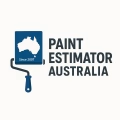Introduction:
Understanding markup and profit margins is essential for painting contractors to ensure the financial viability of their business. This is especially true for painting contractors in the childcare centre and playground industry, where projects can vary in scope and size. By understanding markup and profit margins, contractors can accurately price their services, cover their costs, and maintain a healthy profit. This article will explore these concepts, providing insights into calculating labour productivity rates and managing costs for painting projects in Mill Park, Australia.
Understanding Markup
Markup is the difference between the cost of a product or service and its selling price. For painting contractors, markup is calculated by taking the total cost of a project, including materials, labour, and overhead, and adding a percentage to arrive at the selling price. This percentage represents the profit margin.
For example, if a painting project has a total cost of $10,000 and a desired profit margin of 20%, the markup would be $2,000 (20% of $10,000), and the selling price would be $12,000.
Calculating Labour Productivity Rates
Labour productivity rates are crucial for understanding the efficiency of your crew and the cost of labour for a painting project. These rates are typically calculated based on the number of hours worked and the amount of work completed.
The painting project calculator can help you calculate labour productivity rates for different crew sizes. This calculator considers factors such as the number of painters, their skill levels, and the expected completion time for a project.
For instance, if you have a crew of four painters, and they complete a project in 80 hours that could have been done by a crew of three in 90 hours, the labour productivity rate for the larger crew is higher. This information is valuable when bidding on future projects and determining the most efficient crew size for a particular job.
Overhead and Indirect Costs
Overhead and indirect costs are essential factors in determining the overall cost of a painting project. Overhead costs include expenses such as rent, insurance, utilities, and administrative salaries, which are necessary to run your business but are not directly associated with a specific project. Indirect costs, on the other hand, are those incurred as a result of performing a particular project but are not directly related to labour or materials.
It's important to allocate these costs across multiple projects accurately. One method is to allocate them based on direct labour hours or a percentage of direct labour costs. This ensures that your quotes cover all necessary expenses and that you're not operating at a loss.
Materials and Supplies
The cost of materials and supplies is a significant component of any painting project. It's crucial to accurately estimate these costs and include them in your markup calculations. This includes not only the paint itself but also primers, brushes, rollers, tape, and any other consumables required for the job.
When estimating material costs, consider the quantity and quality of materials needed. Higher-quality paints may cost more but can result in better coverage and durability, requiring less frequent repainting. It's also important to build relationships with suppliers to understand price fluctuations and ensure a steady supply of materials for your projects.
Competitive Pricing and Market Analysis
Understanding the competitive landscape is vital when setting your prices. Researching competitors' pricing for similar projects can help you stay competitive while ensuring your business remains profitable. Consider the level of service and quality you offer and adjust your pricing accordingly.
Additionally, keep an eye on market trends and fluctuations in the cost of materials and labour. This will help you anticipate changes and adjust your markup accordingly. Staying informed and responsive to market conditions demonstrates your adaptability and commitment to providing fair and transparent pricing to your customers.
Conclusion:
Understanding markup and profit margins is crucial for painting contractors to ensure financial success. By calculating labour productivity rates, considering overhead and indirect costs, and staying informed about competitive pricing, you can accurately quote projects and manage your business effectively.
Call to Action:
Explore the Paint Expense Calculator to streamline your project quoting process and ensure your business remains profitable. Our calculator considers all the factors discussed in this article, providing you with accurate estimates and helping you make data-driven decisions. Start using our calculator today and take control of your painting business finances!
FAQs
How do I calculate the labour productivity rate for my painting crew?
You can calculate your crew's labour productivity rate by using a painting project calculator. Input the number of painters, their skill levels, and the expected completion time for a project. This will give you the labour hours required, which you can then use to calculate the rate based on your crew's output.
What factors should I consider when setting my profit margin?
When setting your profit margin, consider your business objectives, overhead costs, and the competitive landscape. Ensure your margin covers your overhead expenses and provides a reasonable return. Research competitors' pricing and understand the value your business offers to set a competitive yet profitable margin.
How do I handle fluctuations in material costs when quoting a project?
Stay informed about market trends and price changes for materials. Build relationships with suppliers to get insights on price changes. When quoting, you can include a clause that accounts for material cost fluctuations, allowing for adjustments if prices change significantly before or during the project.
How often should I review my markup and profit margins?
Review your markup and profit margins regularly to ensure they remain competitive and reflect any changes in your business or the market. Monitor your financial statements and project profitability, and adjust your margins if you notice a consistent trend of over or under-performance. Aim to review your margins at least annually or when significant changes occur.
What are some common overhead costs I should consider when pricing my services?
Overhead costs include expenses necessary to run your business but not directly associated with a project. These typically include rent or lease payments, insurance, utilities, administrative salaries, marketing expenses, and vehicle maintenance and fuel costs for transport. Allocate these costs across your projects to ensure they are covered in your quotes.
Key Information
| Category | Description |
| —————— | —————————————————————————— |
|---|---|
| Profit Margin | Percentage added to the cost to determine the selling price. |
| Labour Productivity | Efficiency of crew measured by output and hours worked. |
| Overhead Costs | Expenses necessary to run the business, not directly linked to a specific job. |
| Indirect Costs | Expenses incurred due to a project but not directly related to labour/materials. |
| Materials & Supplies | Paints, primers, brushes, rollers, and other consumables required for projects. |
| Markup | Difference between cost and selling price, calculated as a percentage. | | Profit Margin | Percentage added to the cost to determine the selling price. | | Labour Productivity | Efficiency of crew measured by output and hours worked. | | Overhead Costs | Expenses necessary to run the business, not directly linked to a specific job. | | Indirect Costs | Expenses incurred due to a project but not directly related to labour/materials.| | Materials & Supplies | Paints, primers, brushes, rollers, and other consumables required for projects.|



